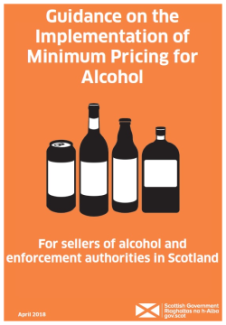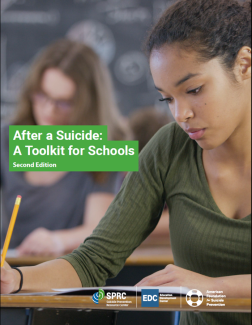Reducing the risk factors and enhancing the protective factors associated with initiating substance use.
Prevention
Scotland Becomes the First Country to Enforce Minimum Pricing on Alcohol
Scotland has become the first country in the world to enforce a minimum price per unit of alcohol. As of 1 May 2018 all alcohol must cost no less than 0.5GPD or 50 pence. The move is the result of a long process of research and...

Funcionamiento familiar e intentos de suicidio en un hospital público de Argentina
Resumen Objetivo Analizar los componentes funcionales de la dinámica familiar y factores asociados al intento de suicidio en pacientes asistidos en un hospital público de Argentina en el año 2015. Métodos Se realizó un estudio descriptivo...
World No Tobacco Day 2018: Tobacco and Heart Disease
World No Tobacco Day: Tobacco and Heart Disease
Date: 31 May 2018
Every year, on 31 May, WHO and partners mark World No Tobacco Day (WNTD), highlighting the health and other risks associated with tobacco use, and advocating for effective policies to reduce tobacco consumption.
World day without tobacco 2018: Tobacco and heart disease
World day without tobacco 2018: Tobacco and heart disease
May 31, 2018
On 31 May of each year, the who and its partners celebrated the world no tobacco day in order to highlight the risks associated with smoking, both for health and other areas, and advocate for effective policies to reduce their consumption.

After a Suicide: A Toolkit for Schools
American Foundation for Suicide Prevention, & Suicide Prevention Resource Center. (2018). After a suicide: A toolkit for schools (2nd ed.). Waltham, MA: Education Development Center. After a Suicide: A Toolkit for Schools assists schools in...

8th European Alcohol Policy Conference 2018
The 8th European Alcohol Policy Conference (8EAPC) will take place from 20-21st November in Edinburgh, Scotland.

Overview of European University-Based Study Programmes in the Addictions Field
In 2015, the team from the Department of Addictology (First Faculty of Medicine of Charles University and General University Hospital in Prague) in cooperation with our colleague from the Department of Community Medicine & Health Care...

SAMHSA Tobacco-Free Recovery Grant 2018
The Substance Abuse and Mental Health Services Administration (SAMHSA) National Center of Excellence for Tobacco-Free Recovery Grant is now open for applications. Offering up to 5 million USD the grant can be used for a range of projects...

Competencies for Canada’s Substance Abuse Workforce
Workforce competencies are technical and behavioural skills that enhance the performance of addictions professionals, allowing them to better meet the needs of their clients. The Competencies for Canada's Substance Abuse Workforce is a...

Standardized Indicators for National Drug Information Networks in the Caribbean
This guide, developed by and for persons working in member states of the Caribbean, presents a model set of indicators to countries desiring to standardize the way that they organize, collect, and report drug-related information for their...